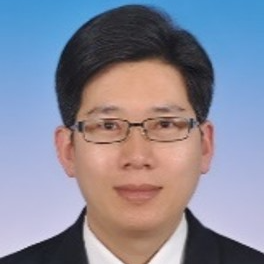Intelligent Precision Machining
A special issue of Micromachines (ISSN 2072-666X). This special issue belongs to the section "D:Materials and Processing".
Deadline for manuscript submissions: 30 April 2024 | Viewed by 4683
Special Issue Editors
Interests: intelligent precision machining; surface integrity; precision measurement
Special Issues, Collections and Topics in MDPI journals
Interests: alloy
Special Issues, Collections and Topics in MDPI journals
Interests: design of cutting tool, cutting technology; intelligent optimization of cutting process; fem simulation of cutting process
Special Issues, Collections and Topics in MDPI journals
Special Issue Information
Dear Colleagues,
The intelligent precision manufacturing concepts of Industry 4.0 shed some light and provide essential means for manufacturing those products with the rapid growth in the demand for advanced products and high-precision components for assorted applications in fields such as aerospace, biomedical, advanced optics, photonics and telecommunication, etc. The combination of artificial intelligence and manufacturing processes is indispensable for achieving high precision and ultra-smooth surface, which forms the backbone and support of today’s innovative technology industries. Accordingly, this Special Issue seeks to showcase regular research papers, reviews and communications that focus on the frontiers of intelligent precision machining. It will serve as a platform for the communication of the latest developments and innovations in intelligent precision machining technologies.
We look forward to receiving your contributions!
Prof. Dr. Jiang Guo
Prof. Dr. Yebing Tian
Prof. Dr. Caixu Yue
Guest Editors
Manuscript Submission Information
Manuscripts should be submitted online at www.mdpi.com by registering and logging in to this website. Once you are registered, click here to go to the submission form. Manuscripts can be submitted until the deadline. All submissions that pass pre-check are peer-reviewed. Accepted papers will be published continuously in the journal (as soon as accepted) and will be listed together on the special issue website. Research articles, review articles as well as short communications are invited. For planned papers, a title and short abstract (about 100 words) can be sent to the Editorial Office for announcement on this website.
Submitted manuscripts should not have been published previously, nor be under consideration for publication elsewhere (except conference proceedings papers). All manuscripts are thoroughly refereed through a single-blind peer-review process. A guide for authors and other relevant information for submission of manuscripts is available on the Instructions for Authors page. Micromachines is an international peer-reviewed open access monthly journal published by MDPI.
Please visit the Instructions for Authors page before submitting a manuscript. The Article Processing Charge (APC) for publication in this open access journal is 2600 CHF (Swiss Francs). Submitted papers should be well formatted and use good English. Authors may use MDPI's English editing service prior to publication or during author revisions.
Keywords
- manufacturing intelligence and informatics
- Intelligent manufacturing process
- precision manufacturing
- multi-objective optimization
- digital twin for process
- real-time monitoring and decision making
- machine Learning
- manufacturing optimization and simulation
- adaptive manufacturing








